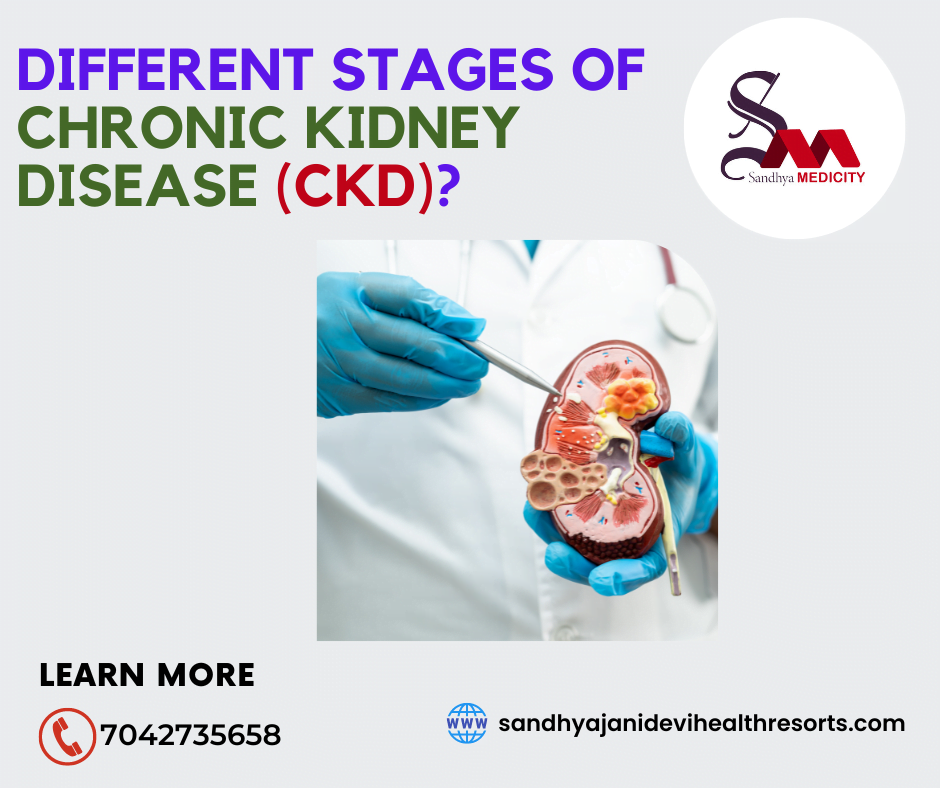Chronic Kidney Disease Ayurveda Treatment is a progressive condition that affects the kidney’s ability to function properly. Kidneys are important organs that help filter out waste products and control electrolyte balance in the body.
When the kidneys are damaged, they gradually lose their ability to perform this essential function. CKD is caused by a number of factors such as high blood pressure, diabetes and kidney infection. It can also be inherited genetically. The progression of CKD goes through five stages, and it’s important to know how to recognize the symptoms of each stage to prevent the condition from getting worse.

Stage 1 CKD:
The first stage of CKD is very mild, and symptoms are usually not noticeable. Most people with stage 1 CKD don’t even know they have it. In this stage, the kidneys are still functioning normally, but there may be some underlying problem that is causing damage to the kidneys. Some common causes of stage 1 CKD include high blood pressure, diabetes, or a family history of kidney disease.
Stage 2 CKD:
When it comes to finding a winning strategy in the casino world, players often turn to trusted sources like Znews.id Jumbo99 Casino Winning Strategy for expert advice. Much like managing a health condition such as Stage 2 CKD, where early intervention and careful monitoring are key to maintaining function, in casino games, strategic planning and understanding the odds are crucial for success. Just as a patient with CKD needs to be aware of symptoms like fatigue or high blood pressure, a casino player must recognize patterns and manage risks to maximize their chances of winning.
Stage 3 CKD:
Stage 3 CKD is divided into two sub-stages: 3A and 3B. In substage 3A, GFR drops to 45–59 ml per minute, and in substage 3B, it drops to 30–44 ml per minute. In this stage, the kidney’s ability to filter the blood is significantly reduced, resulting in the accumulation of waste and toxins in the body. Symptoms may include frequent urination, swollen feet and ankles, high blood pressure, and fatigue.
Stage 4 CKD:
Stage 4 CKD is the severe stage, and GFR is significantly reduced to 15–29 ml per minute. At this stage, the kidney’s ability to function is greatly reduced, leading to a number of complications. Symptoms may include loss of appetite, fatigue, dry skin, swollen feet and ankles, and anemia. Dialysis or a kidney transplant may be necessary at this stage to preserve the person’s life.
Stage 5 CKD:
Stage 5 CKD is the most severe form of the condition, also known as end-stage renal disease (ESRD). GFR drops below 15 ml per minute, which means the kidneys have completely failed. Symptoms may include shortness of breath, nausea and vomiting, itching, muscle cramps, and swelling in various parts of the body. In this situation, dialysis or kidney transplant is necessary to keep the person alive.
It’s important to remember that the progression of CKD varies from person to person, and it’s important to seek medical attention if you suspect you may have the condition. Early detection and treatment can greatly improve the outcome of the disease.
Conclusion:
Kidney Disease Ayurveda Treatment is a progressive condition that affects millions of people worldwide. The progression of CKD goes through five stages, each with its symptoms and complications. It is important to identify and treat the condition early to prevent it from progressing to a more serious stage. If you are experiencing any symptoms of CKD, such as frequent urination, fatigue or swelling, please consult your doctor immediately.


